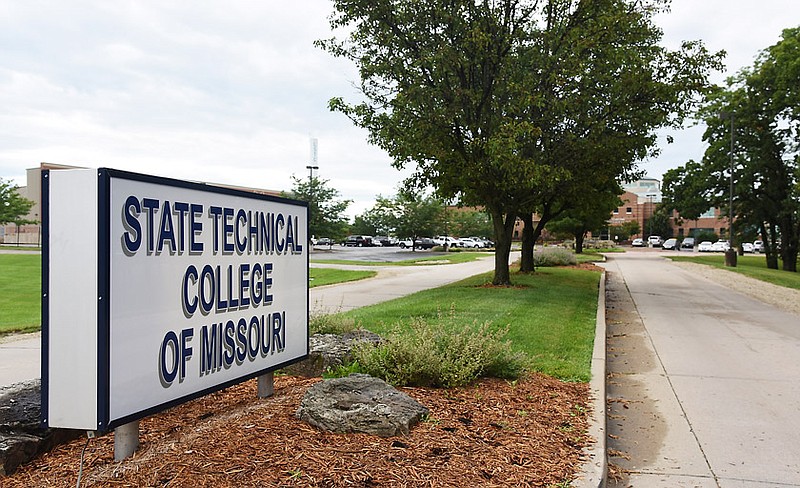State Technical College students will be paying $7 more for each credit hour, starting next fall.
The school's Board of Regents approved the increase Friday, with an anticipated cost increase from $280-$420 a year, depending on a student's class load.
Chief Financial Officer Jenny Jacobs told the regents the $7 per credit hour was the maximum increase allowed under the calculations of Missouri's Higher Education Student Funding Act, which limits tuition increases to a calculation that includes the cost-of-living index and the average tuition rates of all Missouri colleges and universities.
President Shawn Strong told the regents that, in the next five years, State Tech must increase revenues by at least $3.5 million - just to keep operating at the level the school has now.
He told the News Tribune after Friday's meeting: "$2 million of that will just be benefits - MOSERS (retirement) and health care. That doesn't include giving raises for folks. So, you have to grow to stay ahead of that."
State Tech received a clean audit report from the Jefferson City-based Evers and Company CPA firm - with no recommendations for changes in accounting practices.
"That's a great thing and obviously welcome," Board President John Klebba, of Linn, told the News Tribune. "It just shows how good our staff is under Jenny (Jacobs), to get everything together, and how well the administration is in spending money as approved and in maximizing our revenues."
Jacobs spent about 40 minutes reporting details of the school's current budget picture, half way through the business year that ends June 30.
Strong said: "Compared to where we thought we were going to be, we're in pretty good shape. We haven't given raises for awhile. We have all sorts of deferred maintenance issues.
"I said two years ago, when you're running a deficit budget, it's hard to talk about growing - and clearly, we need to grow."
Strong told the board State Tech has been growing when many other schools have seen a drop in student enrollment.
"We got back into our 'sweet spot,'" he said. "As our costs go up, we need to grow to match. We were flat (for) a few years, and we fell out of our sweet spot a little bit. We're back into that sweet spot but, going forward, we need to keep growing."
The goal is to increase student enrollment by another 500 students over the next five years.
But, Strong said, "You can't grow enough with our expensive programs to stay in that sweet spot. It gets harder and harder, the bigger and bigger you grow, when your (state) appropriation is static. So, that's a challenge."
Klebba said State Tech's high rankings nationally - "in the single digits, (compared) with all schools that do what we're doing" - means that "what we're doing, we're doing really well."
He sees the big challenge as "how do you change with the times without sacrificing the successes we've had in the past."
Gov. Mike Parson's proposed budget for the state business year that begins July 1 leaves higher education funding the same as the 2018-19 business year - with State Tech proposed to receive $5,530,371, the same as this year's appropriation.
Klebba said: "We can't control, with very much effect, how much money we get from the state. But we can control how well we spend it - (and) we'd always like more."
Parson said in Wednesday's State of the State address, and again Thursday when he announced plans to streamline the Economic Development Department's operations, that "workforce development" is a key part of his budget proposal and his administration's priorities.
Klebba said that idea bodes well for State Tech's long-range operations.
"What we do is workforce development - much more so than community colleges or four-year colleges," he said. "We are putting people directly in to the workforce - and it is vocational training, as requested by the employers who employ our students."
Strong said: "I don't think we've begun to tap where we can grow to," even with State Tech's specialized programs and small-town location.
"We do try to look at where the (job) demands are going to be and try to get ahead of that," he said, so State Tech is graduating students who can fill employers' needs immediately.
"Not only do we have to do that, but we have to grow our current programs, as well," he said.
Continued growth is one of the three priorities the regents approved in a framework for a more detailed strategic plan the board will be asked to consider at their meeting in June.
Strong listed the three broad priorities as continuing to grow the workforce; supporting employees "and empowering excellence inside and out of the classroom, to grow reputation and enrollment;" and growing revenues "while minimizing incremental cost."
The June proposal will involve the more detailed plans offered by each department and program at the school, he said.

